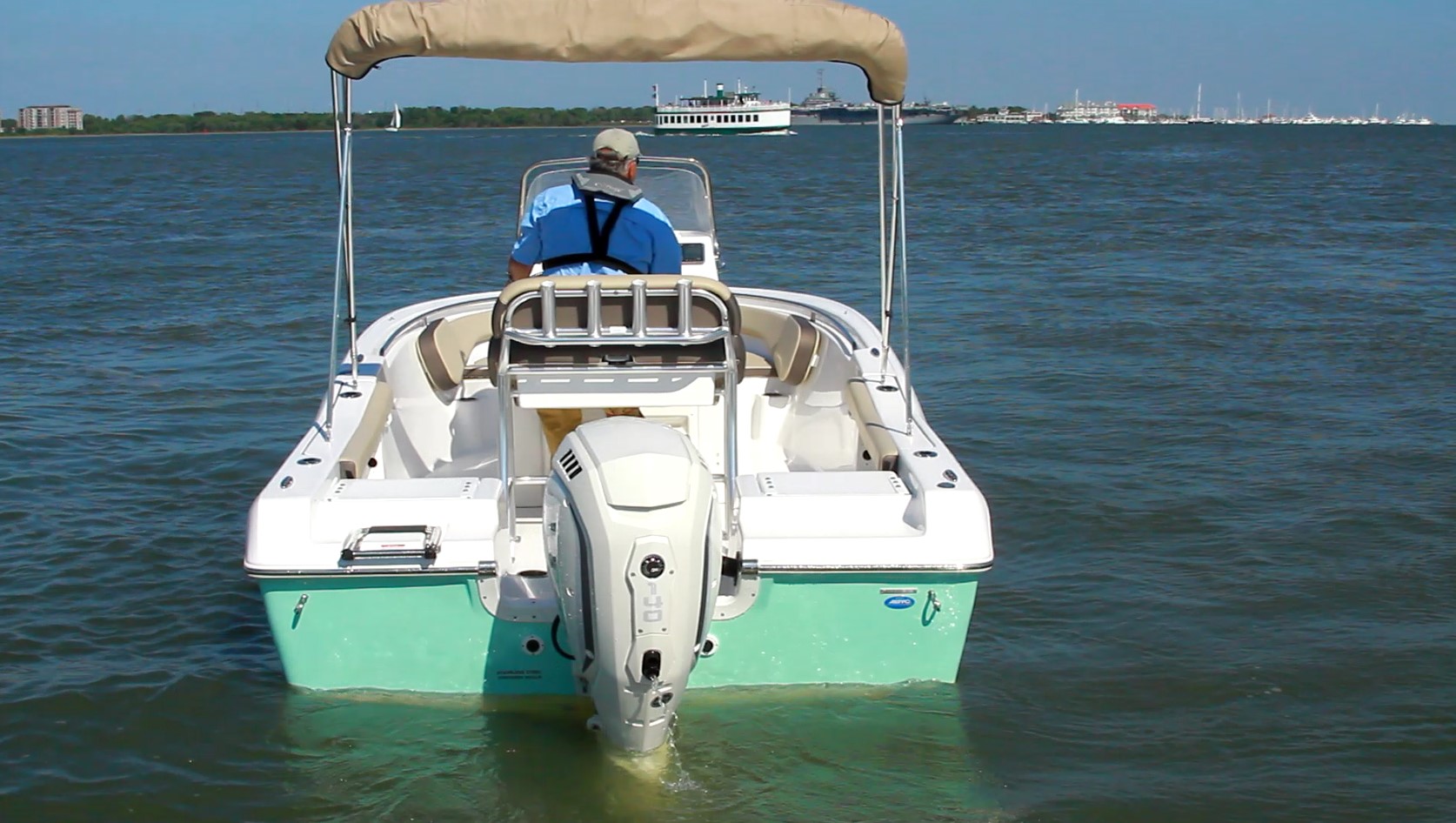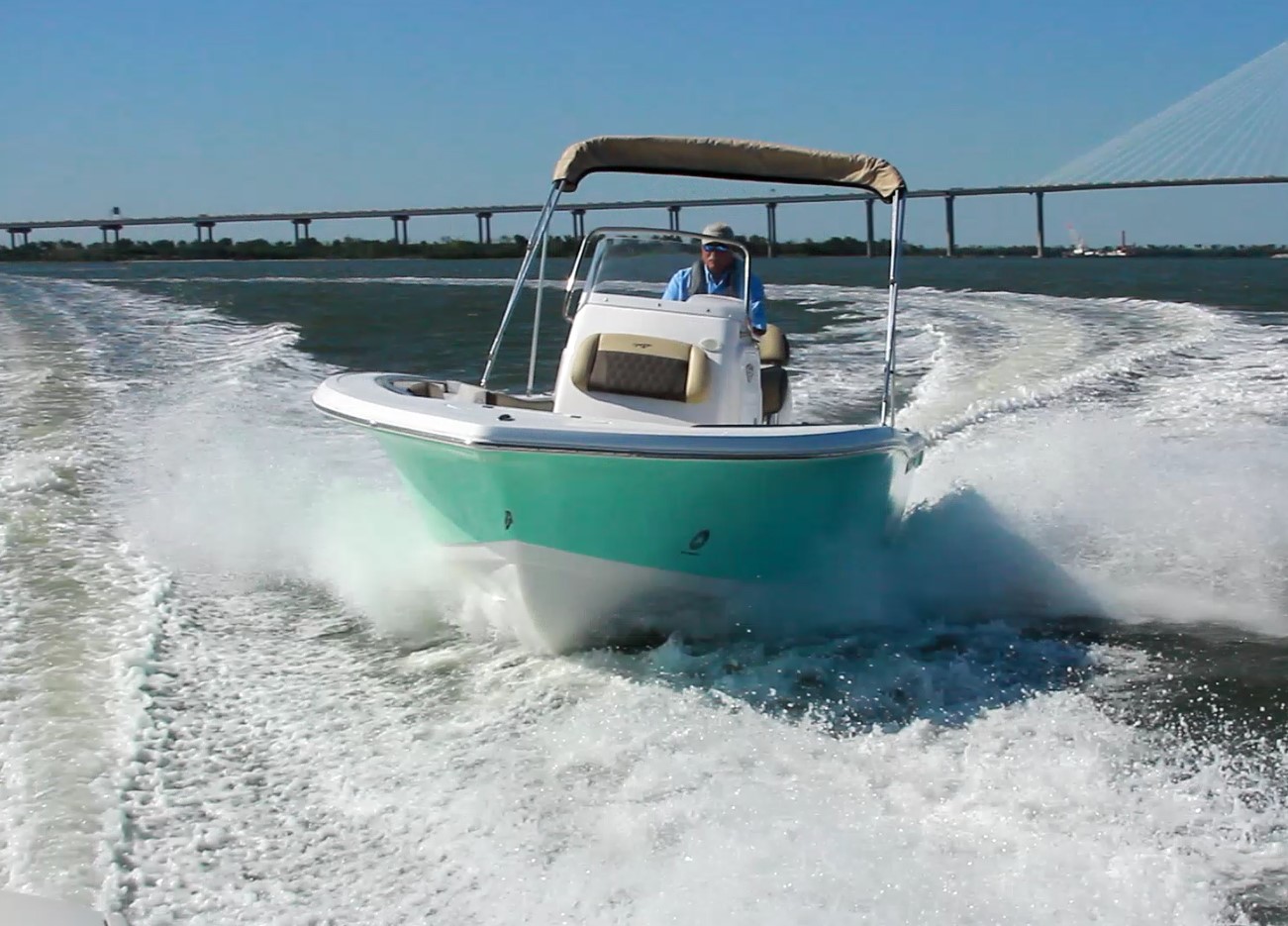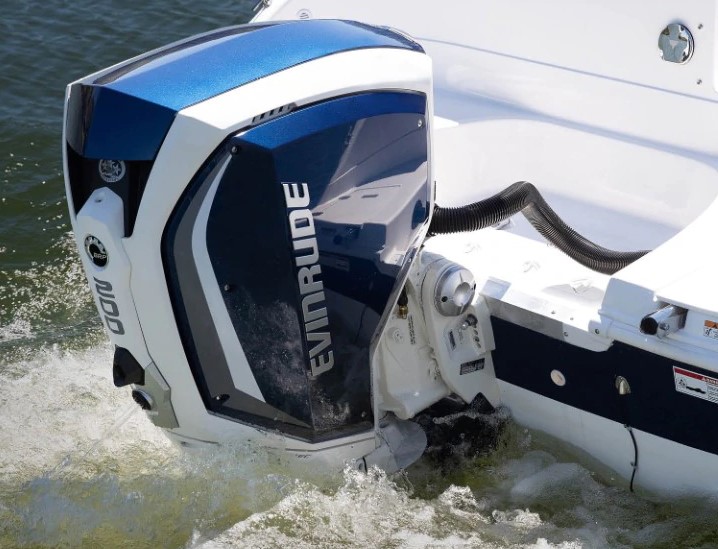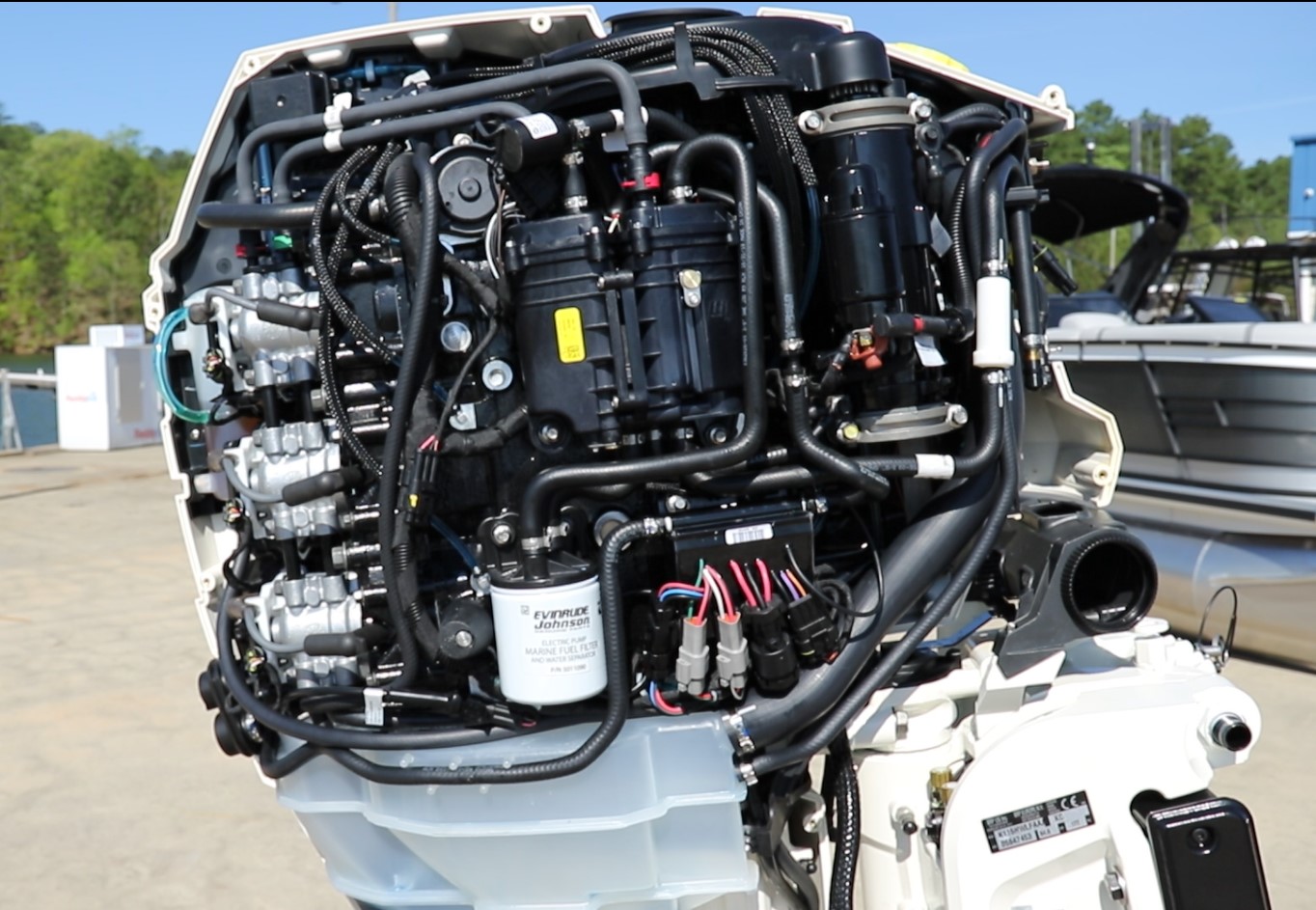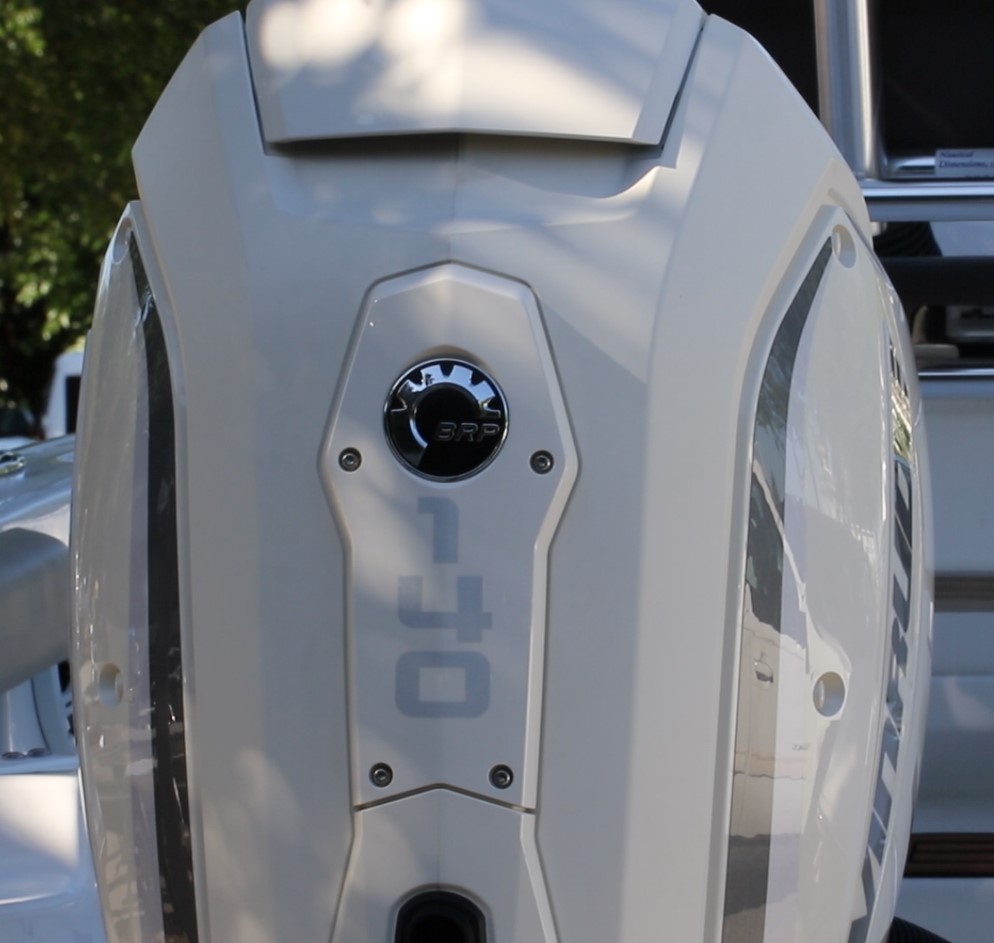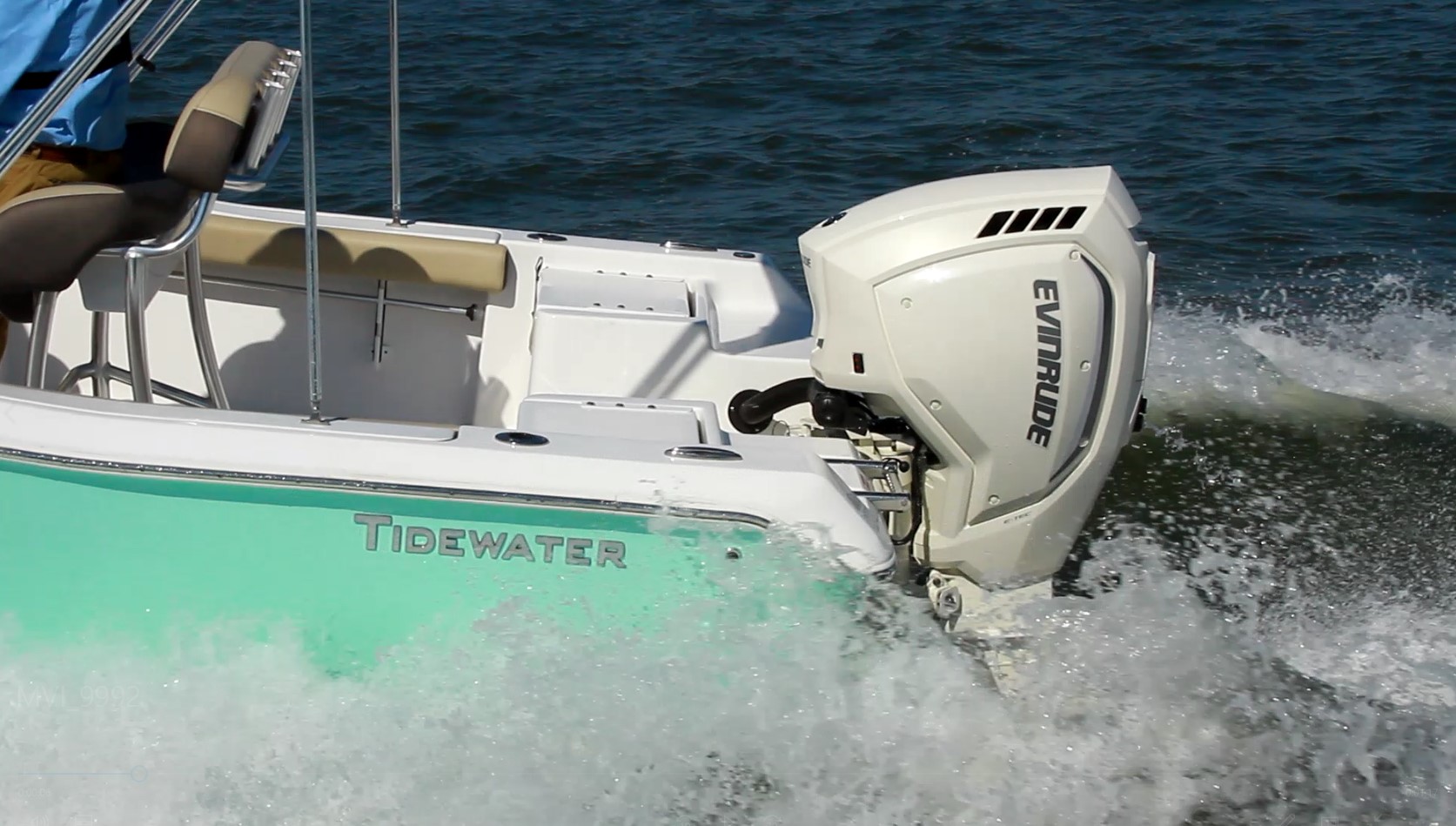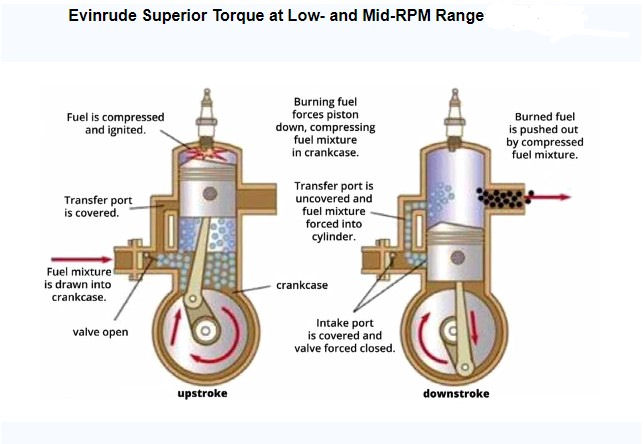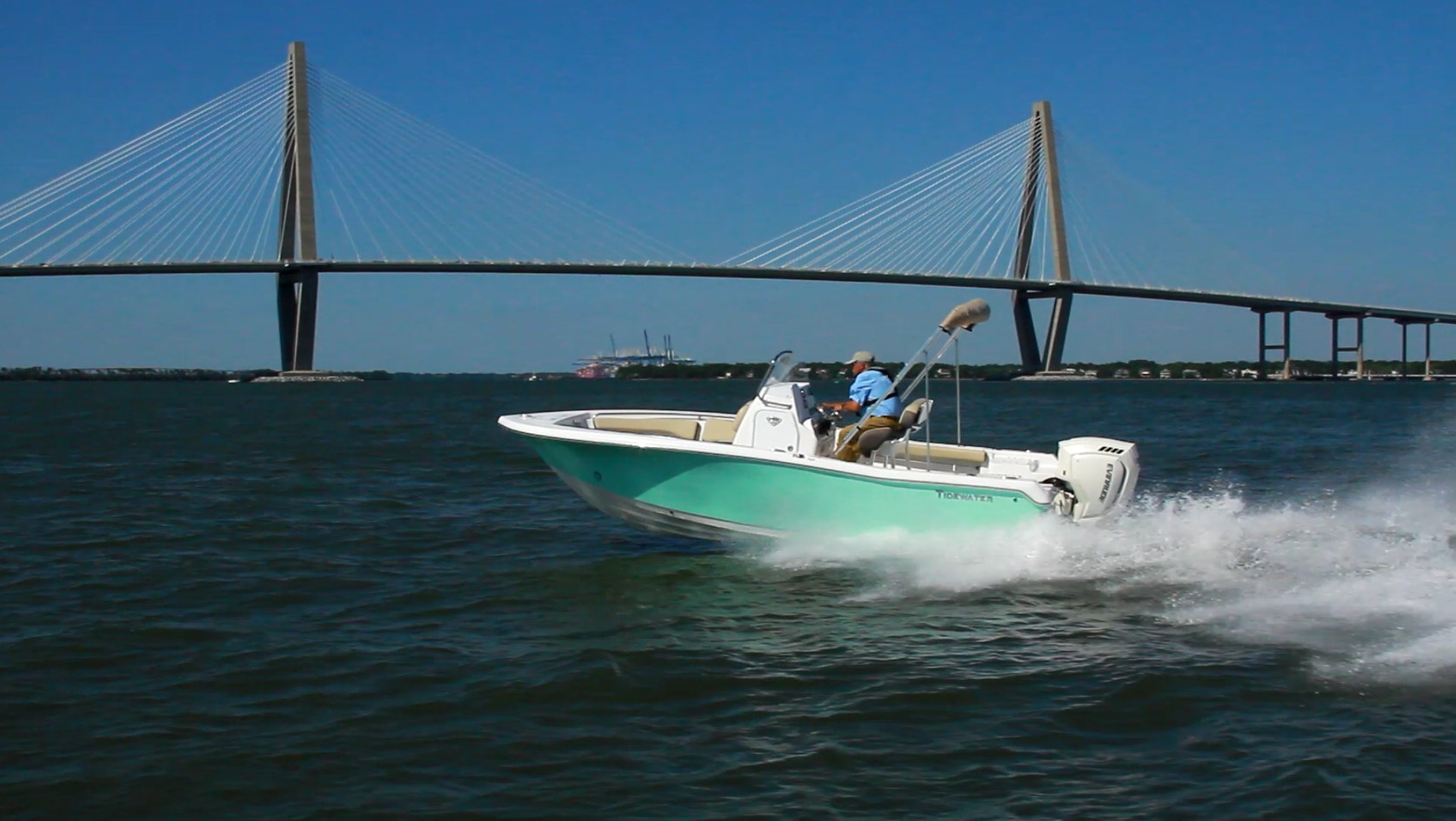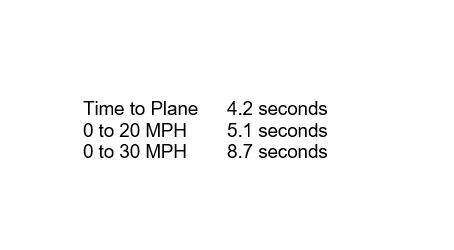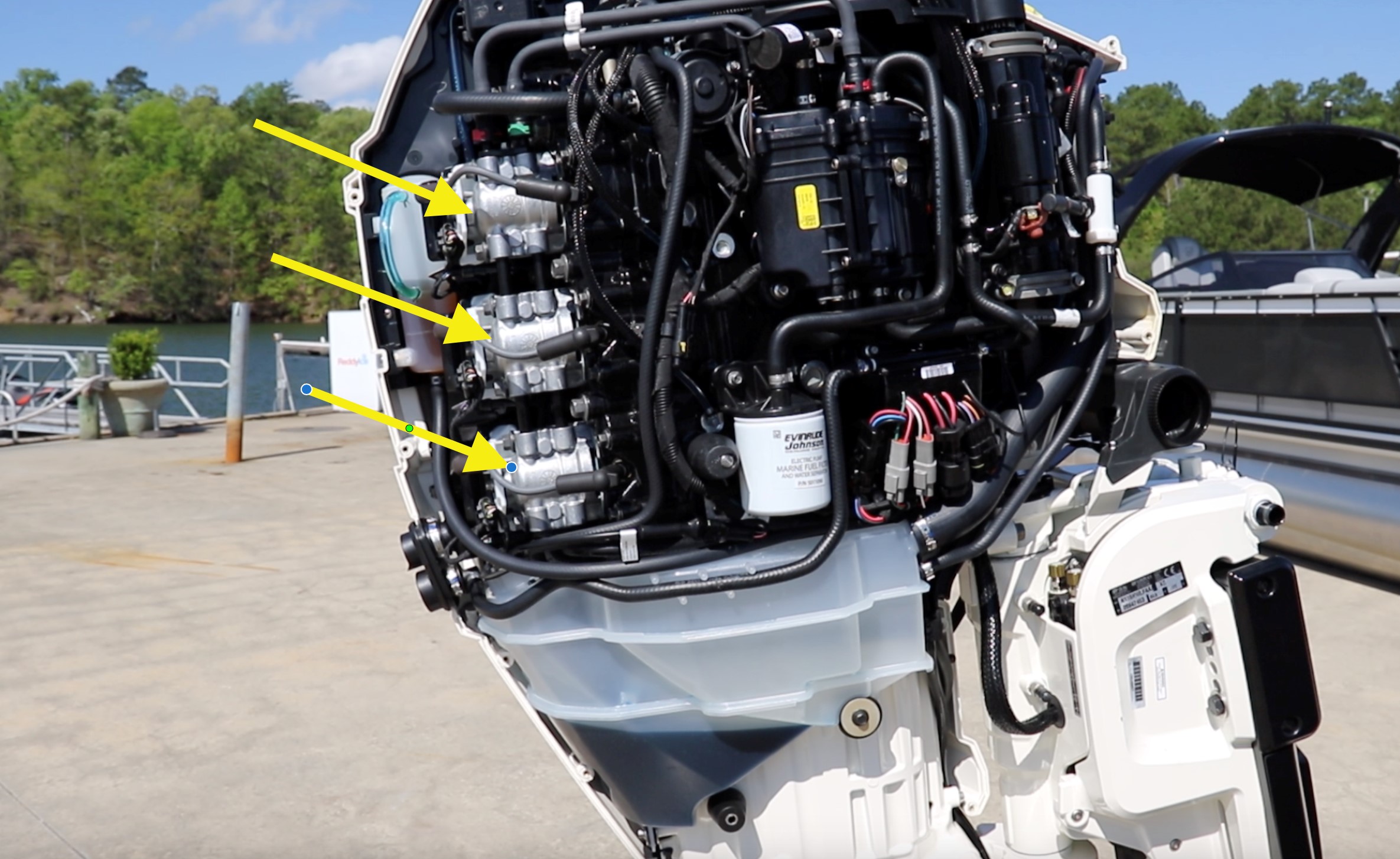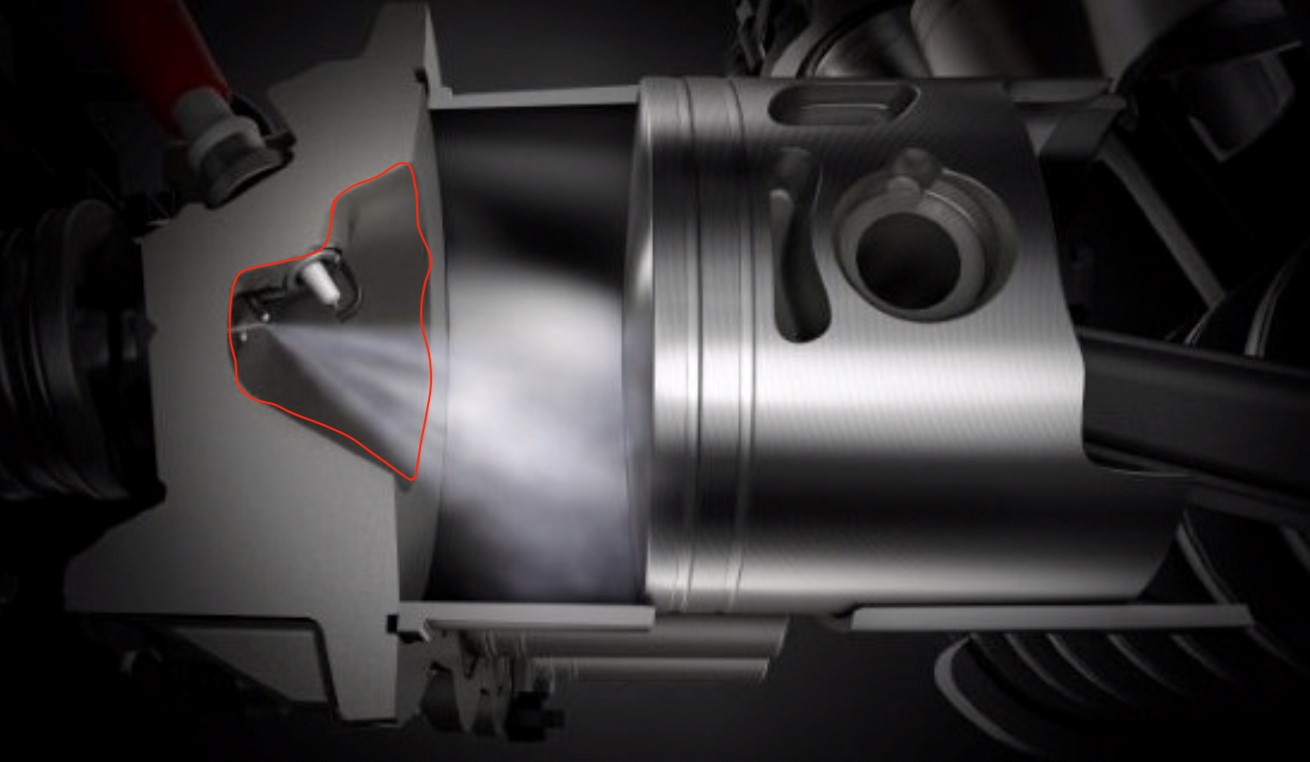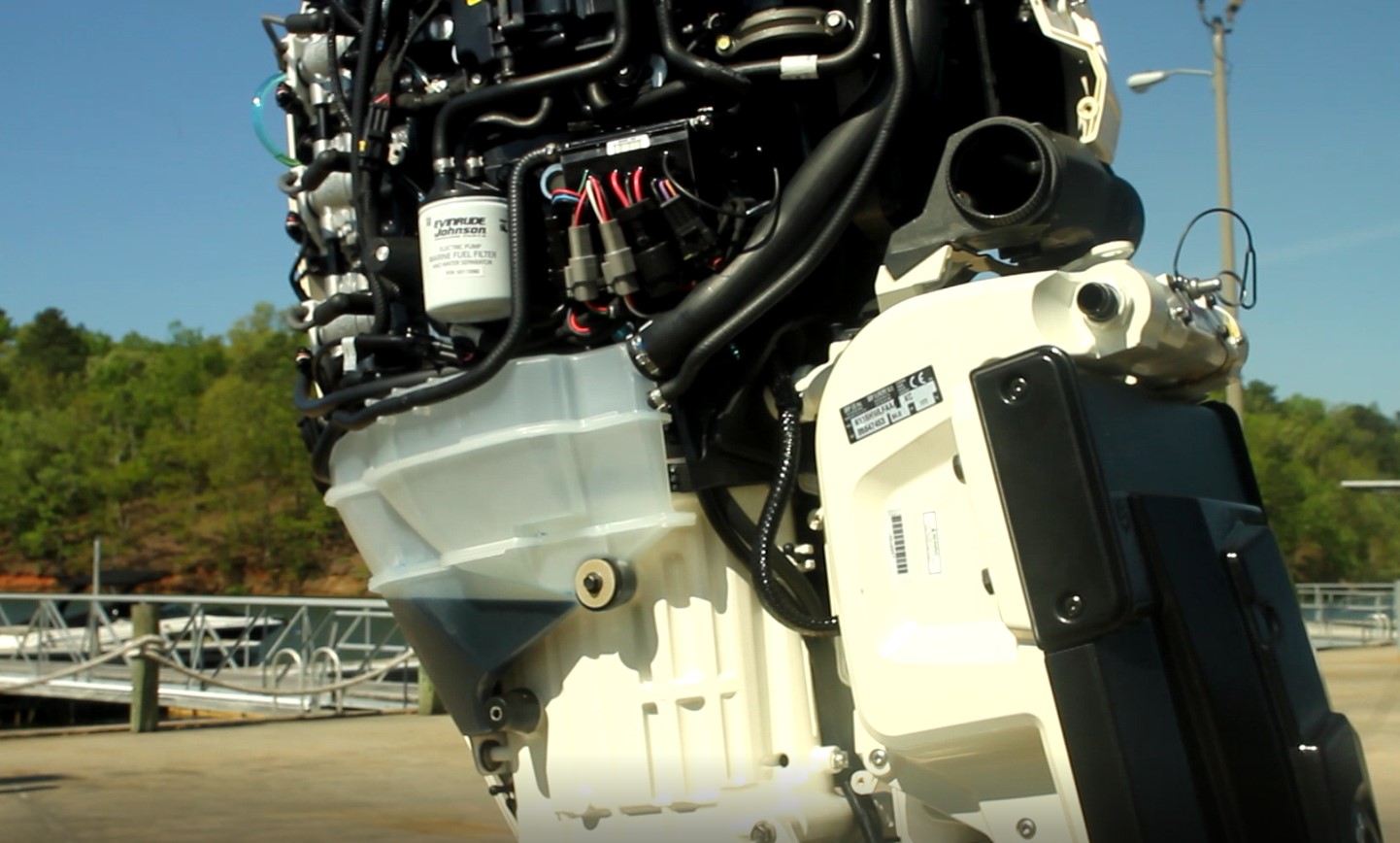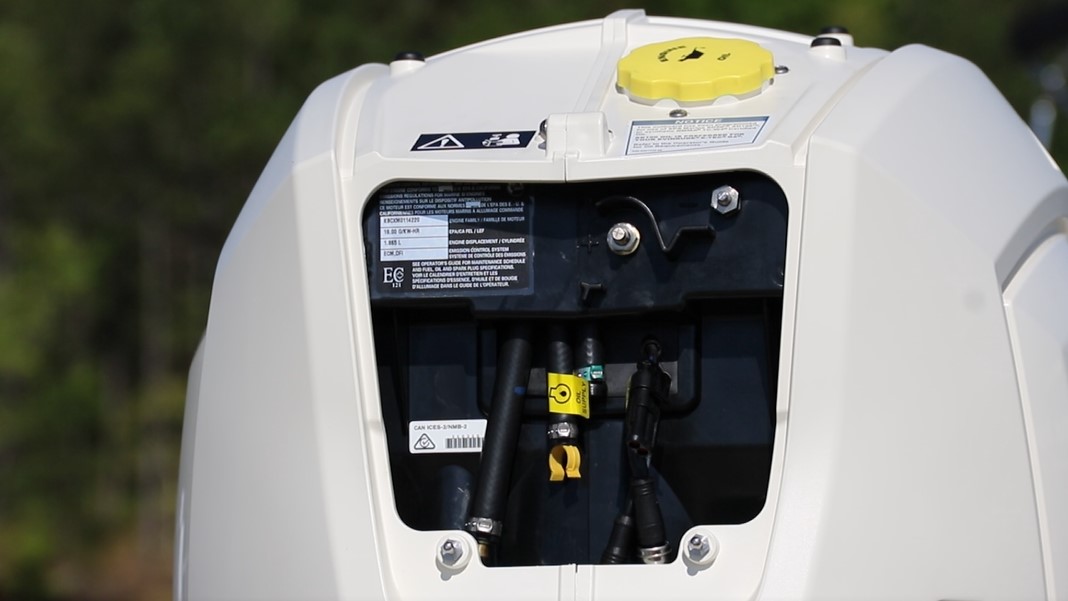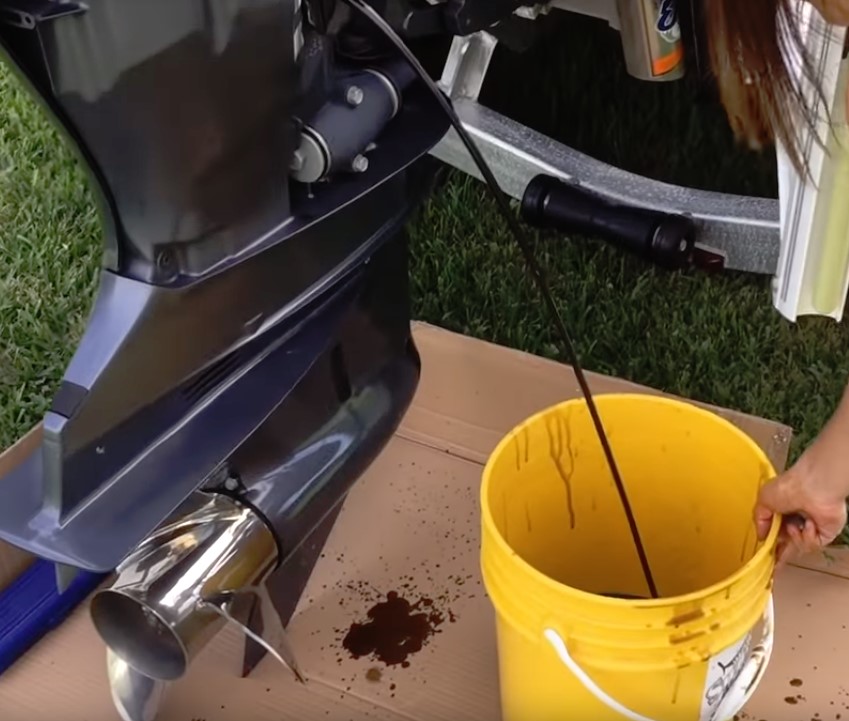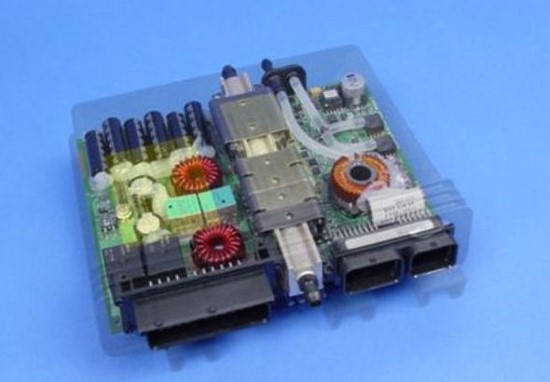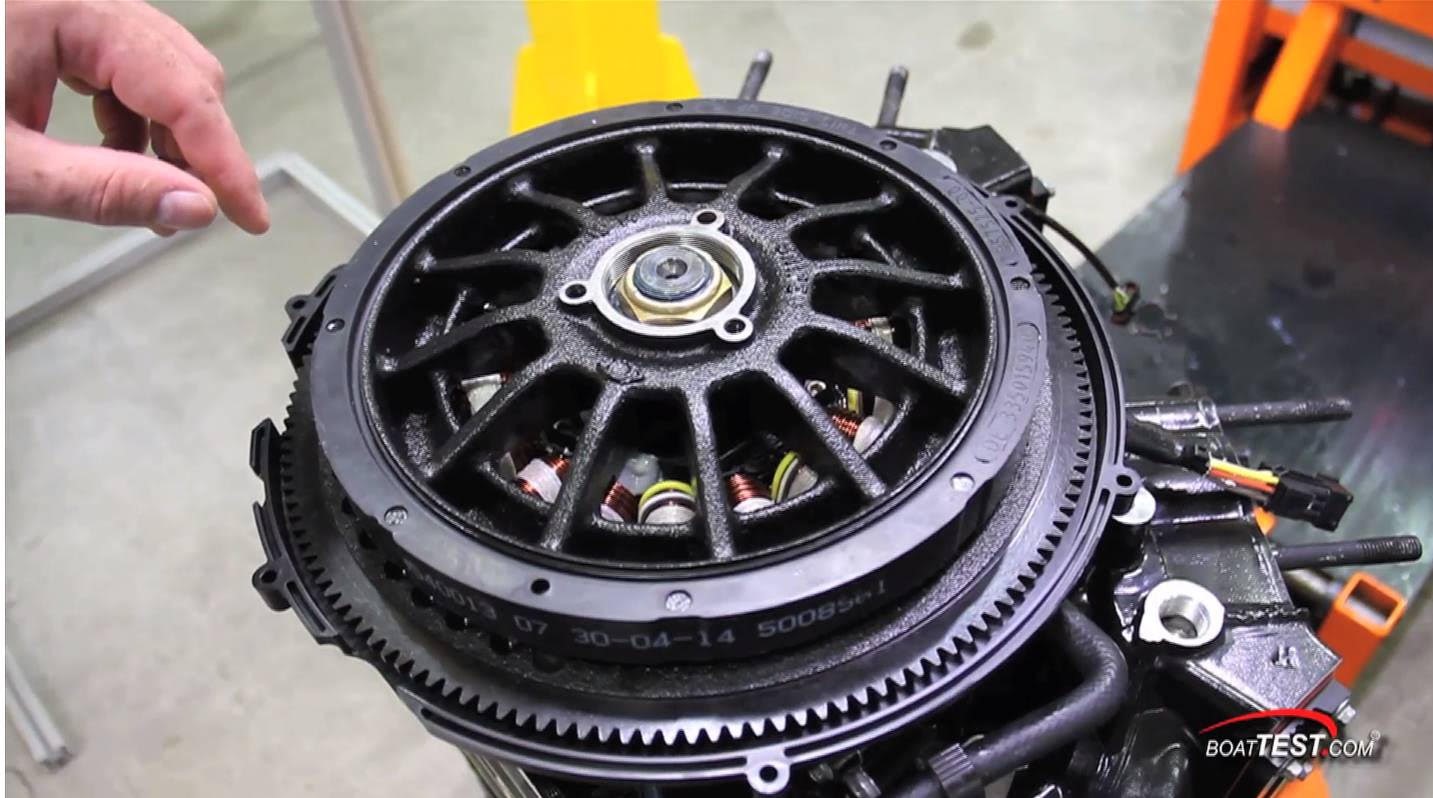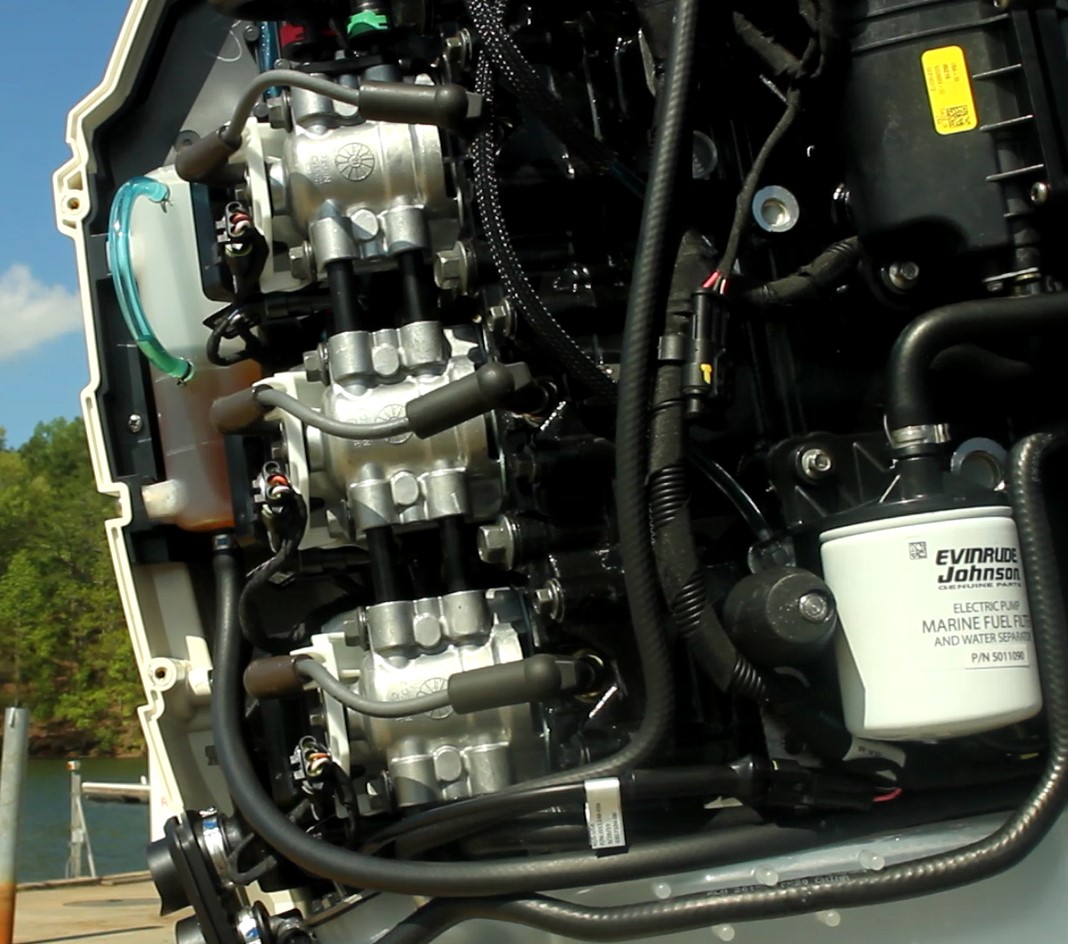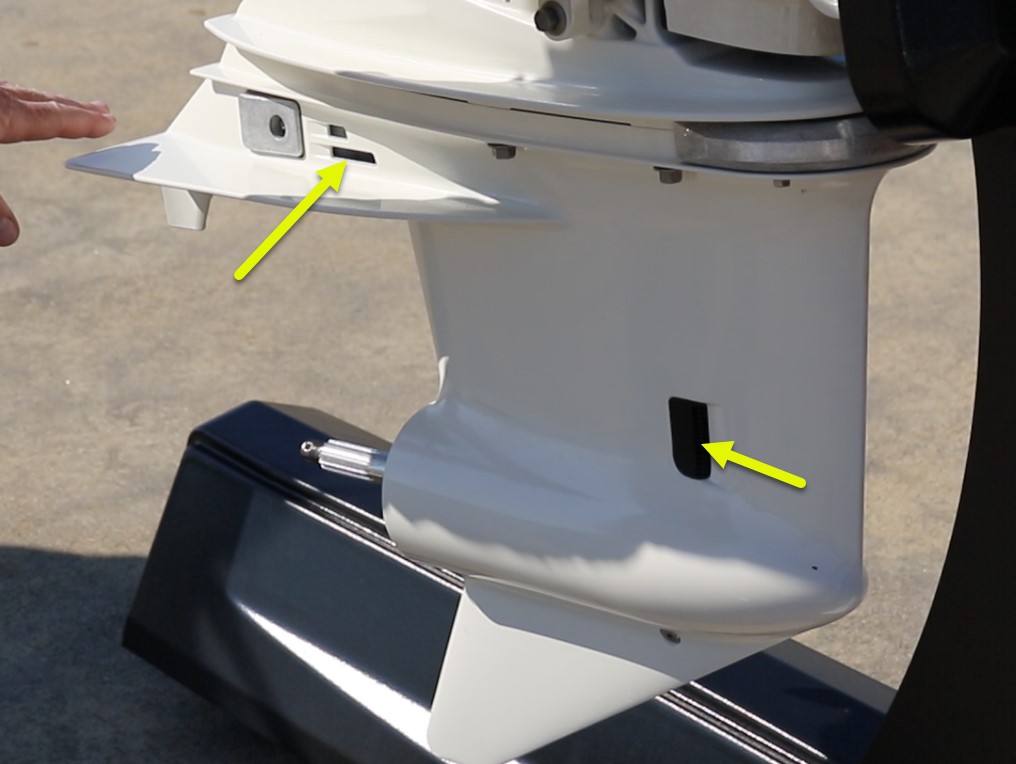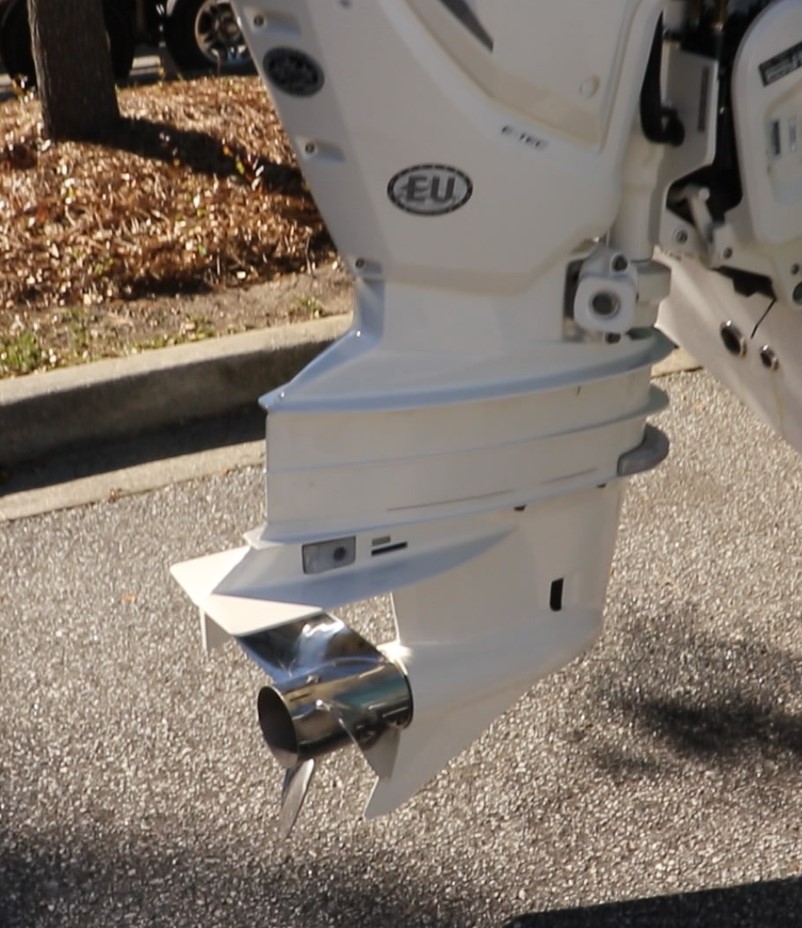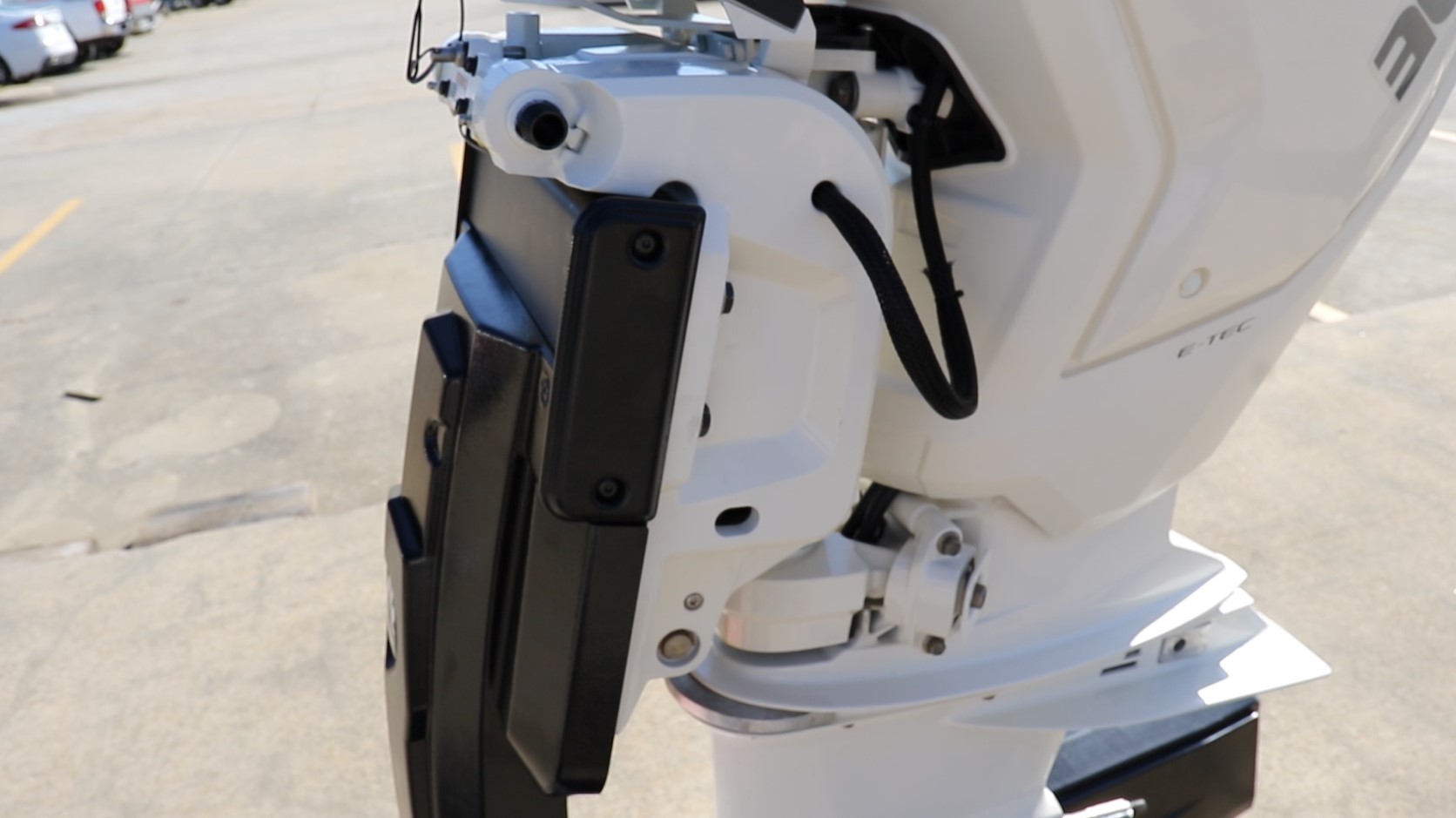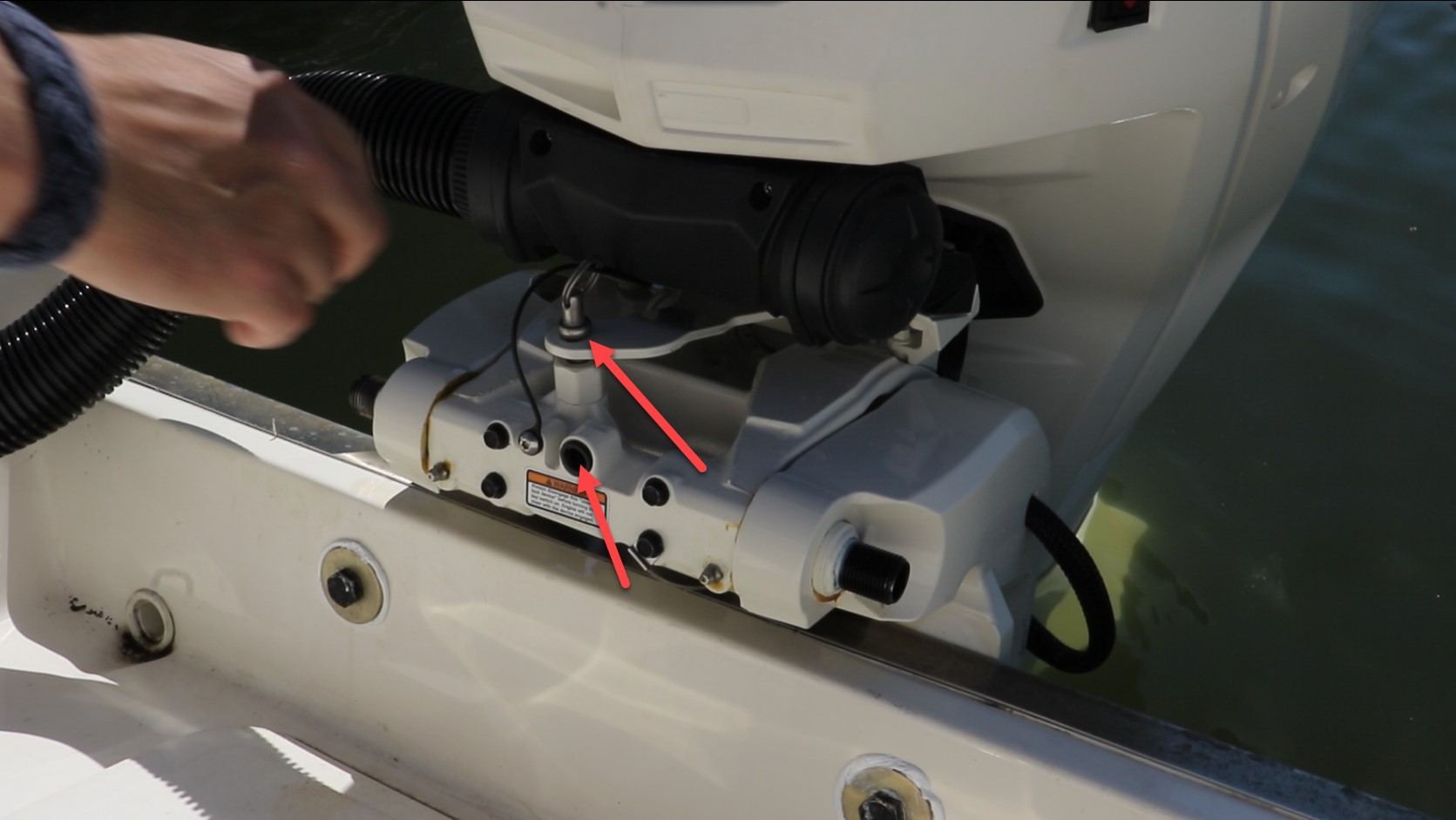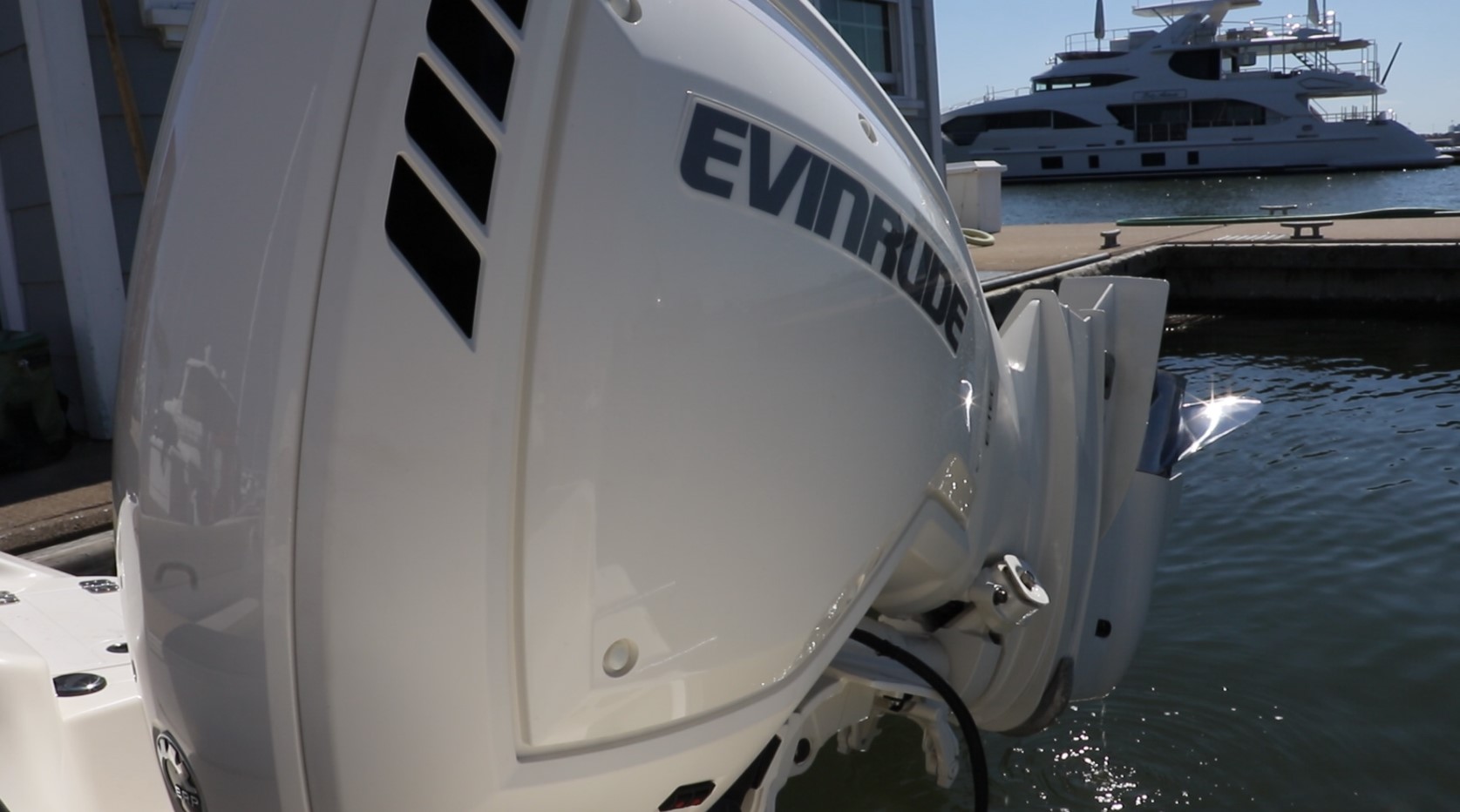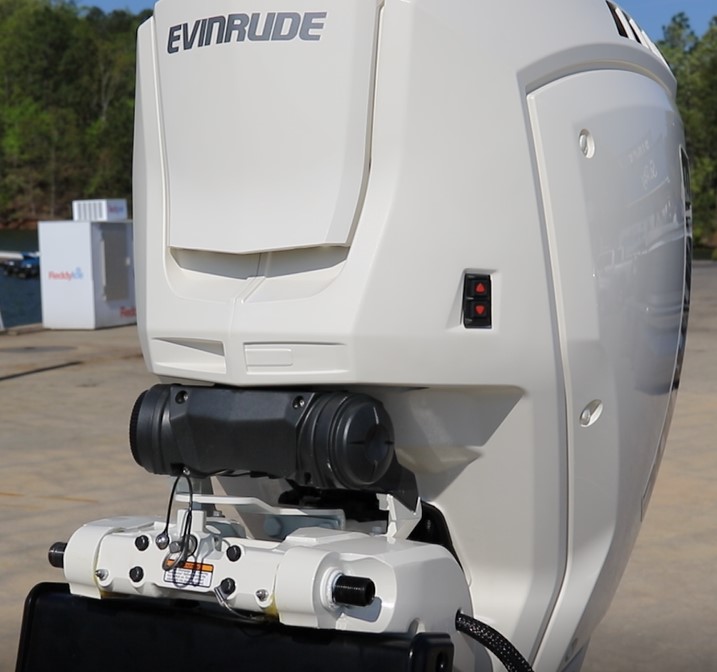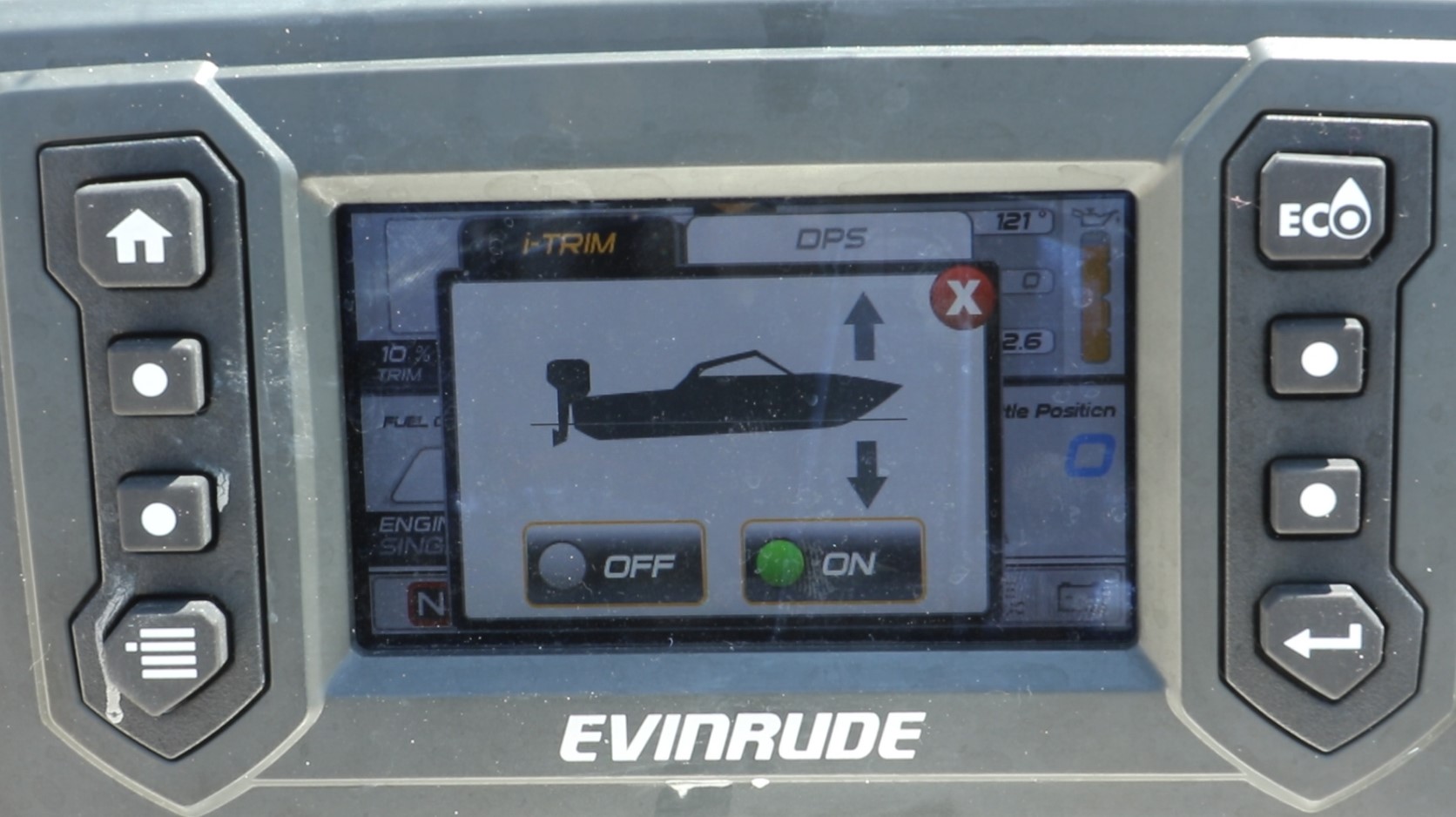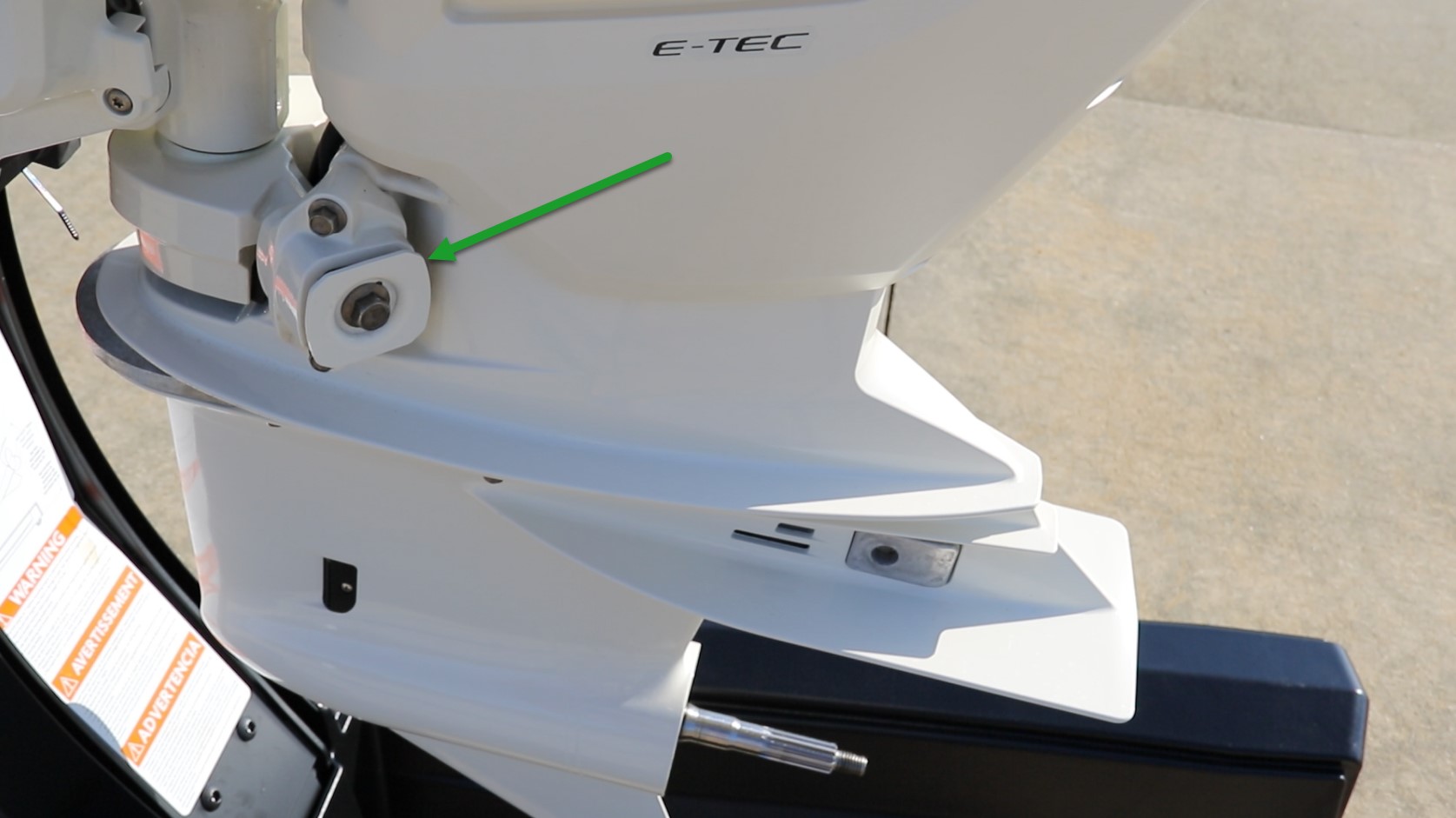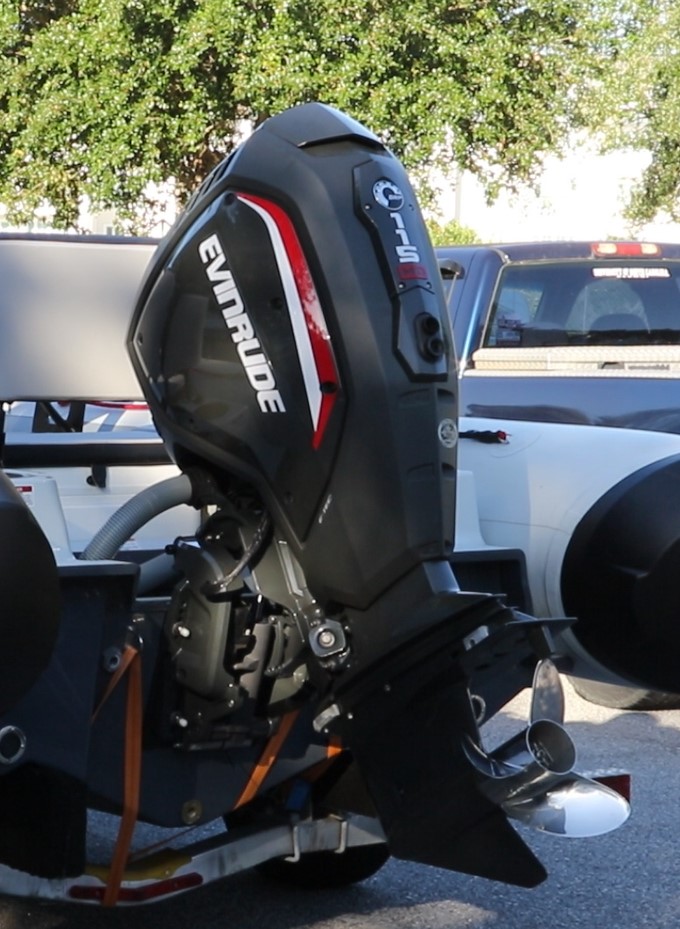Brief Summary
The new Evinrude E-TEC G2 140 engine is a 1.9-liter engine with 3 cylinders and the same direct in-the-cylinder fuel injection and other key features of Evinrude’s larger G2 two-stroke lineup. However, it has its own new features as well, such as a redesigned lower end with shallow water capability that anglers will appreciate, quieter exhaust, balanced crankshaft, and focused engine mounts. The whole package brings a raft of features and performance previously non-existent in a mid-range outboard.
Key Features
- Cleanest emissions, 3-star California Air Resources Board rated
- Industry leading 2-stroke torque
- Magneto charging system
- Designed to run on regular 87 octane gas
- Fly-by-wire DTS controls
- Built-in oil reservoir – never needs oil changes
- iTrim automatic engine trim
- ICON touch screen engine display
- One-Touch winterization
- 5-year anti-corrosion warranty
- 5-year/500 hour warranty
- No scheduled dealer maintenance for 5 years/500 hours
- No break-in requirement
Specifications
| Type of Engine | 2-Stroke |
|---|---|
| Number of Cylinders | 3 |
| Horse Power | 140 |
| Configuration | |
| Weight | 390.00lbs |
| Fuel Type | Gasoline |
| Fuel Delivery | |
| Shaft Length Options | 20 (508) | 25 (635) |
| Shift Throttle Control | |
| Displacement | |
| Steering Control | |
| Recommended Fuel | N/A |
| Alternator Output | Net Amps 14 idle / 22 wot |
| CARB Rating | |
| Engine Monitoring System |
Captain's Report
Contents of Report
- Mission
- Design
- Best Applications
- Performance
- Direct Fuel Injection
- Torque
- Features
- Advanced Oil Lubrication System
- Winterization
- Magneto Charging System
- Gear Oil Reservoir
- Regular Gas
- Redesigned Lower Unit
- Internal Power Steering
- Dynamic Power Steering
- Clean Transom Installation
- iTrim
- Exhaust
- Focused Motor Mount
- Color
- Corrosion Resistant
Mission
Evinrude’s goal was to bring previous G2 technology to the 140-hp engine class. It has digital throttle and shift, direct fuel injection, and internal steering is available, like the other G2s, all of which is previously unheard of in this horsepower range.
These engines have more torque than their 4-stroke contemporaries as well as better emissions and fuel efficiency plus all the features of their larger G2 forebears.
The standard G2 engine features are complemented by cost effective repower options such as the ability to continue to use existing external hydraulic steering and even old cable Teleflex steering in place of Evinrude’s internal steering.
Because it’s built with an all-new two-stroke, 3-cylinder powerhead, this outboard weighs in at just 390 pounds. There aren’t many outboards in this segment, and some weigh about the same, while others are nearly 80 pounds heavier while offering lower horsepower.
Design
Evinrude has used innovation and advanced technology to improve two-stroke benefits, such as a power stroke in each cylinder for every turn of the crankshaft, fewer moving parts, and light weight to build the new 3-cylinder 140-hp engine.
The advanced technology of computer-aided design to map the shape of the cylinder head for optimal direct injection of fuel, coupled with a water cooled brain module (EMM) that times ignition to lower emissions was the most significant advance in the original G2 line.
Dampening Vibration. A natural concern about 3-cylinder engines is that they might have more vibration than a 4 or 6 cylinder engine. Three-cylinder engines are made by virtually all major light-weight car builders, including Mercedes and BMW, and all have figured out how to reduce vibration to levels of 4 and 6 cylinder engines. Evinrude has done the same with counter weights on each end of the crankcase as well as a three-point bushing system that stops the transit of vibration to the boat and sends it back to the engine body, according to the company.
Shallow-Water Pick-Ups. Evinrude has also redesigned a more efficient lower unit with water pickups for shallow water operation and added a split exhaust which goes through a muffler box at idle and through the prop hub below the waterline when the engine is above idle.
Best Applications
The new mid-range Evinrude E-TEC G2s are ideal for:
• Boats
• Multi-species boats
• Bay and flats boats
• Dual consoles and center consoles
• Pontoon boats
• Tow-sports boats
• Bowriders
• Inflatables and RIBs
Performance
We’ve tested Evinrude’s new 3-cylinder G2 mid-range outboards, the 115 HO, the 150-hp, and now the 140-hp on seven different boats. What follows are the latest 140-hp test numbers from our performance and features inspection of the Tidewater 198 CC Adventure.
The Tidewater 198 CC Adventure has a LOA of 19’8” (5.99 m) and a beam of 8’4” (2.54 m). With an empty weight of 1,950 lbs. (885 kg), 56 gallons (212 L) of fuel and two people onboard, we had an estimated test weight of 3,100 lbs. (1,406 kg).
Top Speed. With the Evinrude E-TEC G2 140 outboard powering our test boat, we reached a top speed of 41.8 mph (67.3 kph) at 5500 rpm.
Best economic cruise came in at 3500 rpm and 24.3 mph (39 kph). It was at that speed that the 4.2 gph (15.9 lph) fuel burn translated into 5.8 mpg (2.45 kpl) and a range of 291 statute miles (468 km).
For acceleration, the Tidewater 198 got on plane in an average time of 4.2 seconds and went from zero to 20 mph in an average of 5.1 seconds and on to 30 mph in 8.7 seconds.
Direct Fuel Injection
At the heart of the new 140-HP is Evinrude’s direct-injection fuel system. It is unlike any other system in class for two reasons:
First, the injector is actually in the cylinder head and not in the intake manifold like it is in 4-stroke engines. Because of that position, the Evinrude employs a more robust injector that that can spray in fuel at up to 800 psi, compared to just 35 psi for 4-stroke engines in class. The Evinrude injector works with the refinement of a stereo speaker, pulsing up to 100 times a second.
Second, at low RPM, only a small amount of fuel — like champagne bubbles, according to Evinrude — is injected into the smaller top section of the cylinder. This is called “stratified combustion,” which uses less fuel for more efficiency and cleaner operation.
At high rpm, the engine switches to what’s known as homogeneous combustion and more fuel is injected to the whole cylinder using the full bore and stroke to produce excellent mid- and high rpm-range torque and power.
The result is an engine that Evinrude says is twice as fuel efficient under 1000 rpm, and from 15% to 50% more efficient up to wide open throttle.
Torque
The rotational equivalent of linear force, torque has distinguished Evinrude’s superior 2-strokes from 4-stroke design. More force applied at the prop means quicker time to plane and better responsiveness.
Features
Advanced Oil Lubrication System
There are other important features to the new Evinrude engine. One is the onboard oil reservoir, which holds 1.9 gallons.
Once the top cowling section is removed, the yellow oil-fill cap is visible on top of the engine. When the reservoir is filled, the oil supply will last for 50 to 60 hours of engine run-time, a whole season for most boaters, and usually it’s even longer for low-rev boats which spend about 60% of their time under 1000 rpm.
Oil is not mixed with the fuel. Instead, lubrication is its own completely separate system, sending a carefully metered amount of oil through clear tubes to bathe the cylinder walls in clean oil as needed.
The Evinrude engine never needs oil changes and its oil is always clean, reducing the chance for cylinder wear.
The new Evinrude 140 needs no break-in period — 4-stroke engines permit only limited revs for the first few hours.
A tiny amount of oil is burned in combustion, and because it is added to the exhaust, it’s included in the emissions of the outboard. On 4-stroke outboards, boaters and dealers have to dispose of dirty crankcase oil.
The result is that the Evinrude outboards—already the lowest-emission outboard available—are even cleaner than the competition.
Under the removeable top cowling are the jump start posts, rigging connections for the fuel line, an external oil tank, the forward freshwater flush line, the Evinrude proprietary network connection controlling throttle and shift, and the low-oil-level alert connection. There is also the NMEA 2000 connection to the boat’s systems to integrate with helm units from Simrad, Lowrance, Garmin, and Hummingbird.
Winterization
Automatic Winterization. The engine can be readied for offseason storage with a tap of the Evinrude iTouch display or the BRP eLink smartphone app, while the engine is running, either hooked up to fresh water or at the launch ramp in fresh water. This means that owners can winterize their own engines without the cost and hassle of taking the engine back to the dealer.
Magneto Charging System
On the top of the engine under the black plastic cover is a magneto, which uses simple coils and magnets under the flywheel instead of an alternator. It has fewer parts and there are no pulleys, belts, or brushes to wear out or break. This is why magnetos are used on Formula One and Indy racing cars as well as on propeller-driven small aircraft.
Gear Oil Reservoir
Water in the lower-unit gearcase oil, shown draining above, is a major cause of engine failure. This happens for two reasons: either the oil level is low in the lower unit, allowing condensation to contaminate the oil, or a seal is compromised. Evinrude has solved both of those issues with an expansion tank for gear oil.
Evinrude uses an Ultra-HPF gear fluid, which can continue to lubricate even if it’s contaminated by up to 25 percent of its volume with water.
Regular Gas
The outboard runs on 87-octane fuel and has an internal fuel filter that also functions as a fuel-water separator.
Redesigned Lower Unit
The straight leading edge is designed to shed weeds. Anodes are placed prominently throughout, and the anti-ventilation plate has been shortened and positioned further aft to permit better water flow around the prop and still stop ventilation in rough conditions. Evinrude tells us that in normal conditions this allows the boat to stay on plane at lower speeds.
Internal Power Steering
Internal power steering is available on the 140. This is a major advancement in outboard engine design, and makes installation and repower much easier and less costly.
Repower has provided repower buyers with the ability to use the new engines with other manufacturers’ pre-existing steering to keep costs down. Namely, the outboard has a through-tube tilt tube for use with anti-feedback cable steering. It can also be used with bolt-on external hydraulic steering.
Dynamic Power Steering
In the many boats we’ve tested with Evinrude’s internal steering, the steering system was responsive and each turn of the wheel caused the boat to react immediately.
Helical worm gears over worm gears make for integrated power steering that gives excellent response. Evinrude’s dynamic steering lets the owner adjust the feel of the steering through the ICON touch display as the boat moves from low to high speed.
Clean Transom Installation
A dual-access rigging tube is fixed to the mounting bracket, so it stays put, while allowing the engine to rotate independently, providing for a cleaner transom and less wear on the components that connect the engine to the boat. There are no primer bulbs or power-steering hoses going through it.
iTrim
Evinrude included the iTrim automatic trim system in these outboards, helping the boat perform the way it should even with a novice at the wheel. Simply push the button for iTrim and the boat automatically trims the boat for optimum performance at all speeds.
Exhaust
The outboard’s quiet operation is due to the way the exhaust is managed. An internal muffler box on its port side vents aft, and quiets the engine at idle speeds. Above idle speed the engine exhausts at the propeller hub. In our tests, we have found the new Evinrude G2 outboards to be as quite as 4-stroke engines in low and mid RPM ranges.
Focused Motor Mount
To quell vibration on this three-cylinder engine Evinrude has designed what it calls a “focused motor mount” that isolates the powerhead from the mounting bracket to reduce the vibration transmitted to the boat.
Color
Another feature that’s been added, top to bottom in the E-TEC G2 line, is that the engines are now available with a white exoskeleton, to color match more boats out there.
And like all E-TEC G2 outboards, the side and top panels can be color matched to the boat, with a wide variety of colors and accent striping available.
Corrosion Resistant
The blocks are cast from high-grade aluminum alloy and only stainless steel fasteners are used throughout for added corrosion protection.

Evinrude stands by the outboards with a 5-year corrosion warranty that is at least a year longer and more inclusive than any other outboard warranty. Before buying an outboard for saltwater applications, read the fine print and see what we mean.
